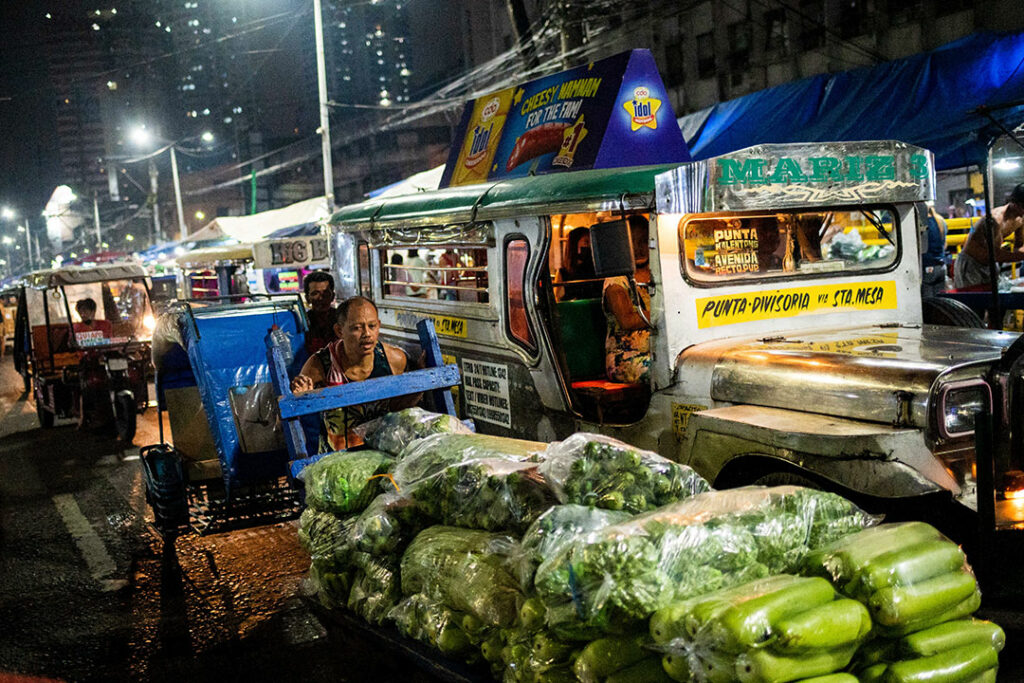




Philippines Trade Update: Trade trajectories trend along
 DOWNLOAD
DOWNLOAD

Policy Rate Updates: Double cut finale
 DOWNLOAD
DOWNLOAD

Monthly Economic Update: One for the road
 DOWNLOAD
DOWNLOAD


PH may grow below target until 2028

The Philippine economy may grow slower than the government’s targets this year through 2028, as high interest rates weigh on consumption, according to a global think tank.
“High interest rates constrict domestic demand, so that’s one of the reasons why we’re a bit more bearish on the [Philippine] economy,” Andrew J. Staples, Asia-Pacific head of thought leadership and public policy at the Economist Impact, told reporters on the sidelines of the forum.
Mr. Staples projected the Philippine economy will expand by 5.4% this year, below the government’s 6-7% gross domestic product (GDP) growth target for the year. It will also be a tad lower than the revised 5.5% GDP expansion in 2023.
The Bangko Sentral ng Pilipinas (BSP) has kept its benchmark rate steady at a 17-year high of 6.5% since October 2023 to tame inflation.
When asked if the BSP is likely to wait for the US Federal Reserve before easing, Mr. Staples said: “It’s so big and powerful that everybody sort of follows its wake.”
He said the Philippines is one of the fastest-growing economies in the region, but “interest rates as a result of inflation have been holding back growth somewhat.”
For 2025, Mr. Staples said Philippine GDP is expected to expand by 6.4%, slightly lower than the government’s 6.5-7.5% target.
He projects Philippine GDP growth to ease to 5.6% in 2026 and 5.9% in 2027 and 2028, also below the government’s 6.5-8% goal through 2028.
To accelerate growth, the Philippine government must focus on policies to bolster foreign direct investment (FDI) and improve domestic consumption, he said.
Mr. Staples said risks to the growth outlook include mass early retirement if the government pushes through with the military pension system reform.
Ongoing tensions with China may also cause delays in the country’s infrastructure development, Mr. Staples said. The Philippines last year dropped China as a funding source for two key railway projects due to slow negotiations.
TRUMP PRESIDENCY
The possible re-election of former US President Donald J. Trump may pose some risks to the Philippines’ relationship with the US.
“There would be some impact particularly on trade and security but not as pronounced as it would be for other countries,” Mr. Staples said during the Management Association of the Philippines (MAP) event on Wednesday.
He gave the country a “quite low” score of 31.60 in the Trump Risk Index, which measures the impact of a Trump presidency on other economies. A score of 100 means a country is “most exposed” while zero signals least exposure.
Mr. Staples said major US trading partners are likely to face higher tariff and trade restrictions, tighter border and security controls, and security burden-sharing under a Trump presidency.
If elected, he said Mr. Trump could also end the US’ participation in the Indo-Pacific Economic Framework for Prosperity (IPEF), a 14-member supply chain agreement with participating countries like the Philippines, Australia, Brunei, Fiji, India, Indonesia, Japan, Korea, Malaysia, New Zealand, Singapore, Thailand, and Vietnam.
“Trump will probably kill IPEF,” Mr. Staples said. “[He] is all about transaction, so he doesn’t want to be tied down by big trade agreements and so on.”
The US presidential elections will be held on Nov. 5.
ROOM TO CUT
Meanwhile, HSBC Global Research said the BSP may have room to cut ahead of the US Federal Reserve amid the improving current account deficit and FDI outlook.
“By keeping its ‘less hawkish’ stance, we expect the BSP to stand in contrast to the Fed’s hawkish pause, suggesting that the BSP won’t necessarily need to wait for the Fed,” HSBC economist for ASEAN (Association of Southeast Asian Nations) Aris D. Dacanay said in a report.
“It will be a bold move by the central bank, but we think the BSP finds confidence in something market players may have been sleeping on — the economy’s fundamentals.”
HSBC noted factors that give the Philippine central bank “confidence” to cut ahead of the Fed, such as the faster-than-expected recovery in the current account deficit.
“The Philippine economy is known for its robust consumption and overseas remittances. And perhaps, this may be the reason why many may have overlooked the fact that the Philippines’ external fundamentals are improving faster than what many had anticipated,” Mr. Dacanay said.
The BSP projects the current account deficit to settle at USD 4.7 billion this year, equal to 1% of gross domestic product (GDP).
HSBC also said that FDI growth also makes the case for the BSP to cut ahead of the Fed.
Separate BSP data showed that FDI net inflows jumped by 42.1% to USD 2.969 billion in the first quarter from USD 2.09 billion a year ago.
Mr. Dacanay also noted the Philippines is the only ASEAN economy whose “real policy rate differential” with the US central bank exceeded pre-pandemic levels.
“This differential could widen further if the rice tariff rate cut pushes through. This would be a substantial decrease in inflation, which, in turn, would widen the Philippines’ real policy rate differential with the Fed. If there is one policy that we suggest keeping an eye on, it would be this. Its quick implementation could set the stage for the BSP to break free, even partially, from the Fed.”
However, HSBC said it is still holding on to its expectation that the BSP will only begin policy easing by the fourth quarter.
“We still don’t think the BSP will cut ahead of the Fed based on our baseline scenario of the Fed cutting as early as September this year,” Mr. Dacanay said. — B.M.D.Cruz and L.M.J.C.Jocson
This article originally appeared on bworldonline.com





 By BusinessWorld
By BusinessWorld